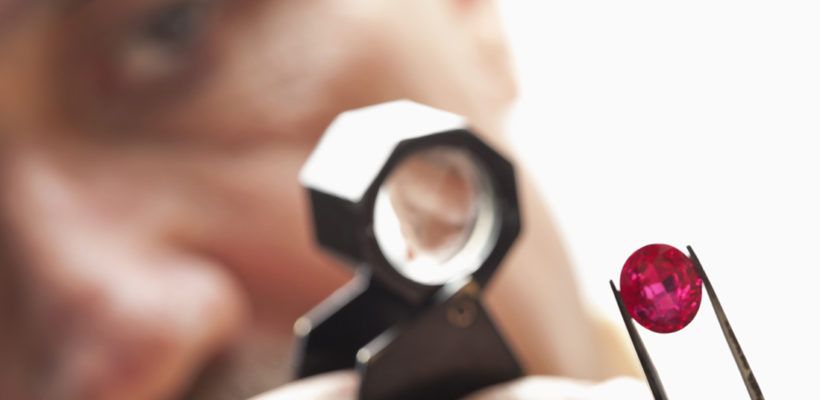
Pearls & Gemstones: The facts and the fiction
The Pigeon’s Blood Tale
The most exceptional type of ruby available is currently known as Pigeon’s Blood, this being a trade rather than scientific term.
It applies to a ruby that is said to have no trace of blue or pink. Legend states that the most perfect ruby is the identical colour as the first two drops of blood from the nose of a freshly killed pigeon. The origin of the term is said to have come from Burma, where the local people refer to the finest rubies as ko-twe, which translates from potential ancient Chinese to mean Pigeon’s Blood and certainly Burma’s rubies (especially from the Mogok tract) are considered some of the World’s finest. Other sources have claimed that it is in regard to the central point of a very much alive pigeon’s eye. In 2015 a Pigeon’s Blood 25.25 carat ruby sold in Geneva for $19.3million.
The gem industry has claimed that there are in fact very few stones that actually deserve this categorisation, despite many being given it previously. Just one of the many reasons, having a gemstone accurately authenticated matters.
Pearls, the most precious of gems
The only gemstone found within a living creature, pearls have had significant value for centuries. Extravagant stories of myth and legend such as Cleopatra dissolving and drinking a pearl to win a wager abound.
The desire for pearls has, like many stones followed trends with the late 15th and early 16th Baroque and Renaissance periods proving popular times for pearls. This continued with the Renaissance Revival during the 19th Century, when pearls were the most valuable gemstone known to man, with exquisite pieces created such as the pearl tiara of Empress Eugénie, which features 212 natural pearls and that now sits in the Louvre in Paris.
Even in the early 20th century pearls hadn’t lost their lustre with Pierre Cartier, whose brother Jacques frequented Bahrain’s oyster beds, purchasing the Fifth Avenue mansion that is now the New York Cartier store in exchange for a matched double strand of natural pearls.
Diamonds and their stories
The word diamond originates from the Greek word ‘Adamas’ meaning unconquerable, indestructible or invincible. In ancient Greek ‘Adamas’ actually meant ‘the untameable’ given because of the diamond’s legendary toughness. Indeed, many Roman and Greek soldiers wore diamonds into battle believing their special strength would rub off.
Nicole Richie’s quote that ‘True friends are like diamonds – bright, beautiful, valuable and always in style’ has some historical relevance given Romans gave diamonds rings as tokens of friendship. Their wedding rings though were frequently made of iron, though in the later years of the empire it was common for Romans to wear iron rings at home and gold rings in public.
It is often said that fake diamonds tend to fog up when breathed upon, while real ones hold no heat. Buyer beware though, this method is not foolproof as moissanite, a synthetically produced stone can pass the breath test and even pass the thermal test of the diamond tester, which is another reason why it’s always worth having gemstones properly authenticated.
A real ruby will change the colour of milk
And as for soaking rubies overnight to see if they change the colour of the milk – that one is just a myth!



